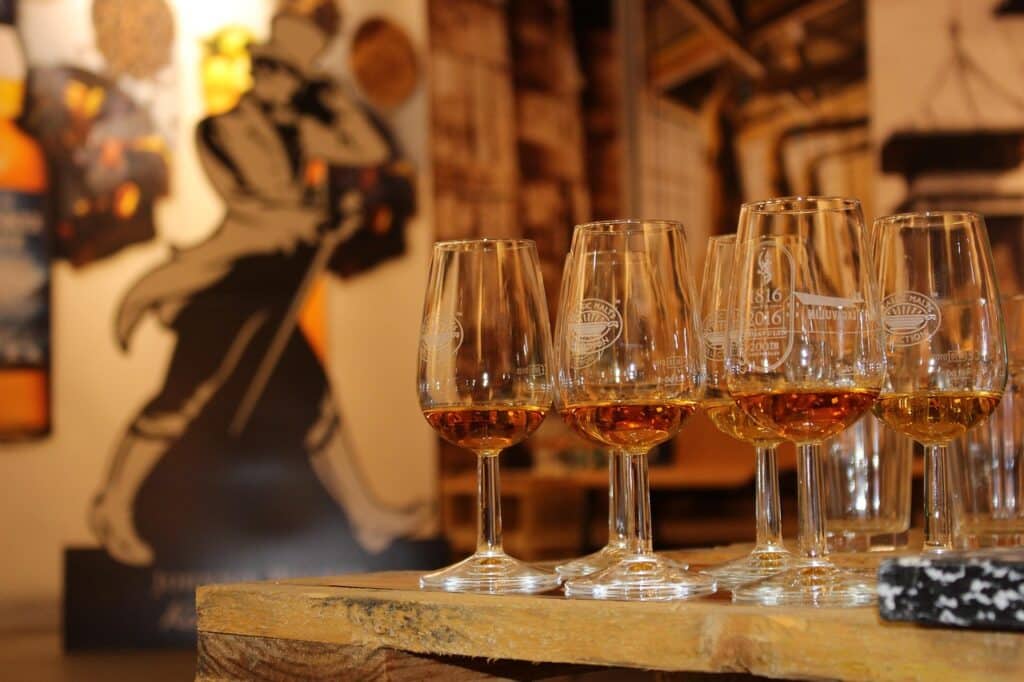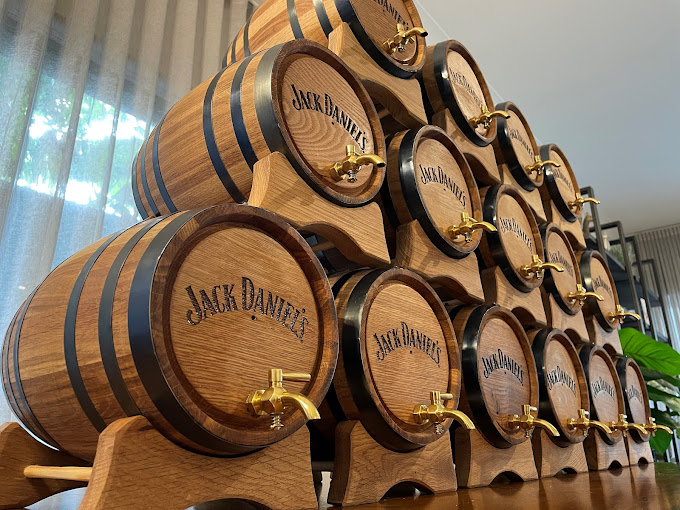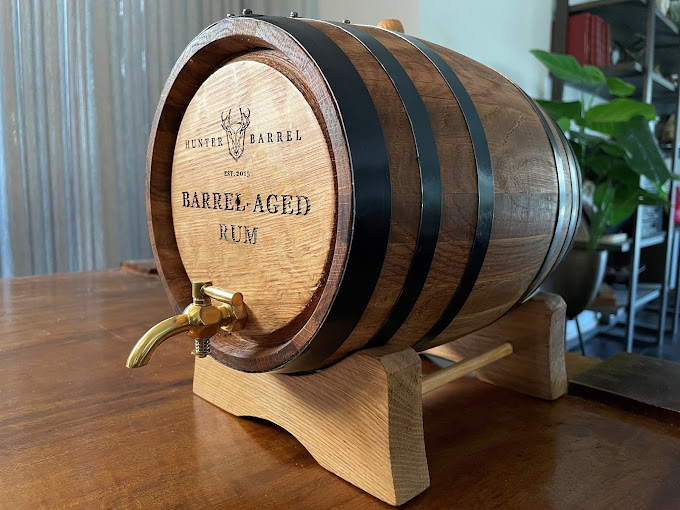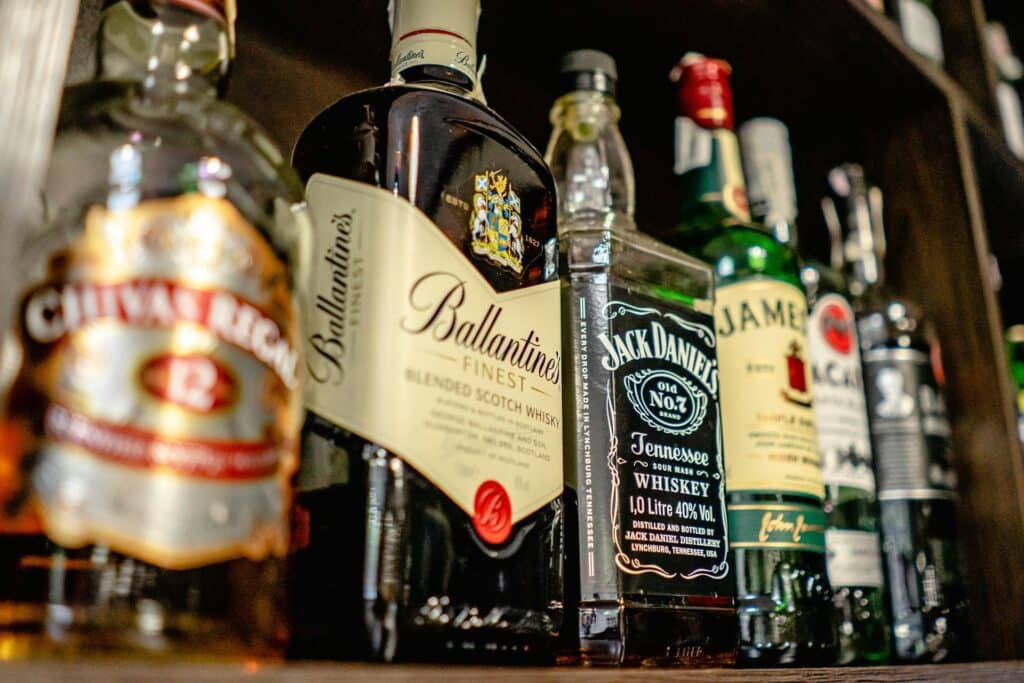How to Age Whiskey at Home: mastering the art of brown spirits

Aging whiskey is both an art and a science, bridging the gap between raw spirits and the final glass. Although large distilleries rely on warehouses filled with towering wooden barrels to develop the distinct flavour of their whiskies, you don’t need to be a master distiller with limitless resources to achieve similar results at home!
With the right equipment, knowledge, and patience, you can transform younger spirits into a smoother, more complex final product right in your own home bar.
This will walk you through the fundamentals of how to age whiskey, including understanding the basics of the aging process, crafting the ideal environment, mastering barrel preparation, monitoring progress, and adapting techniques for different styles of whiskey—be it Scotch, Irish whiskey, rye whiskey, or bourbon.

Image: Pexels
Aging whiskey refers to letting a spirit rest in wooden barrels—most traditionally charred oak barrels—to impart additional flavour, remove harsh notes, and foster complexity. During this time, the liquor interacts with the wood, absorbing compounds that soften and enhance its taste.
The “age statement” on a whiskey bottle (like “12-year-old Scotch”) tells us how long the whiskey aged in a cask before bottling.
Commercial distilleries have long known that the right combination of wood type, temperature changes, humidity, and light exposure can make or break a whiskey’s flavour profile.
Many whiskey drinkers assume that quality whiskies require at least three years in a cask (as is legally required for Scottish whiskey or Irish whiskey). However, with modern techniques in home aging, you can accelerate and modify the process, creating your own aged whiskey in a fraction of the traditional time.
Why age whiskey at home
Learning how to age whiskey at home is an exciting project—an opportunity to craft something entirely unique. It can be a conversation starter at dinner parties, a special small-batch experiment for connoisseurs, or a fun way to expand your knowledge and appreciation of one of the world’s most beloved alcoholic beverages.
If you’ve ever tasted a whiskey aged in oak that boasted strong notes of vanilla, caramel, and spice, you’ve already experienced the magic of the aging process. Undertaking this journey yourself allows you to:
- Experiment with different flavours by choosing specific types of oak, char levels, or even wood chips like maple or cherry.
- Control the environment for faster or slower aging and develop a signature taste unique to your home bar.
- Gain a deeper understanding of the traditional method behind whiskey-making and develop more respect for your favourite brands.
The fundamentals of aging whiskey

Image: Pixabay
Aging whiskey is all about harnessing the natural chemistry between spirit and wood to create layers of complex flavours. Understanding how oak type, char level, and time work together is vital to crafting a smooth, well-rounded pour.
Interaction between wood & spirit
The core of whiskey aging lies in the interaction between the liquid and wood. Specifically, compounds in the oak (such as tannins, lignin, and hemicellulose) break down in contact with alcohol, transferring flavours like vanilla, coconut, caramel, and spice to the whiskey.
This is why aging spirits in charred oak barrels is the most traditional method—charring releases additional flavour and aroma compounds.
American White Oak
The most common type of wood for barrel aging is American white oak, which is prized for its balanced array of flavours (vanilla, caramel, light spice) and its porosity, which allows for a gradual oxidation and evaporation process.
Other woods might impart heavier or more unusual flavours but can be fun for experimental small-batch projects.
The role of time
While many whiskies rest for years, smaller vessels (like a small barrel) or wood chips can speed up the transformation.
Distilleries producing whiskey with a specific age statement—like an Irish whiskey aged 12 years—use large wooden barrels and careful warehouse management. If you use a small barrel or oak chips, you might only need a few months to see significant flavour changes at home.
The wood surface area to liquid volume ratio is higher in smaller setups, allowing the whiskey to develop faster.
The ideal environment for aging whiskey

Getting the environment right is critical. Large distilleries tend to keep casks in warehouses or rack houses, where temperature changes and humidity levels gently affect the liquid over time.
At home, you can recreate these essential conditions by controlling:
| Temperature
Aim for a relatively consistent temperature to avoid rapid and extreme fluctuations. Some fluctuation (day vs. night) benefits the cask’s “breathing,” as temperature changes help the liquid expand and contract, drawing out flavour. However, extreme temperature swings can lead to evaporation and off-flavours. Room temperature or slightly higher is usually acceptable. Many people like to keep their aging barrels or jars in a spot around 18–25°C. |
Humidity
If humidity is very low, the alcohol can evaporate more quickly. When humidity is high, you might lose water more than alcohol. While complete control might be tough in a home setting, try to keep your whiskey in a relatively stable area of the house. An environment that isn’t bone-dry or excessively damp will help ensure the best results. |
| Light
Keep your barrels or whiskey bottles out of direct sunlight, as UV rays can degrade compounds in the liquor and cause unwanted chemical reactions. Use a dark, cool space like a cupboard, basement, or dedicated storage area. |
Airflow
While you shouldn’t store your aging vessel in a sealed environment with no ventilation, you shouldn’t place it next to strong odours (like cleaning chemicals) or in damp cellars with potential mould issues. A moderate airflow in a clean environment is ideal. |
Mastering oak barrel aging

Barrel preparation
Properly preparing your barrel is critical for successful home aging. From ensuring a good seal to eliminating any unwanted flavors, a few simple steps upfront can make or break the character of your final product.
| #1: Choosing your barrel
Begin with a small barrel for your home aging. Common sizes range from 2 litres to 10 litres. The smaller the cask, the faster the flavour extraction. Ensure it’s made of American white oak or a similar hardwood suitable for whiskey. Many smaller-sized barrels come pre-charred on the inside. |
#2: Leak check & “wood swells”
Before you pour in your whiskey, fill the new barrel with warm water and let it sit for 4 days. This ensures the wood swells and seals any micro-leaks. Check for leaks regularly. If water is seeping, contact your supplier for sealing or waxing advice. |
| #3: Seasoning or pre-rinsing (optional)
Some enthusiasts like to rinse the barrel with hot water or a small amount of neutral spirit to remove any excess charred wood particles. Others prefer to fill it with sherry, wine, or port first to impart additional flavours. This technique emulates the process used in some Scotch distilleries, which use ex-wine casks for finishing. If you like the flavour of a specific brand—say “Wild Turkey”—you can rinse the barrel with a bit of that whiskey first to impart faint notes. |
#4: Filling the barrel
Once the barrel is leak-free and ready, fill it to the top with your chosen spirit. Whether you’ve selected a new-make whiskey (white dog) or a younger whiskey you want to develop further, leaving minimal air space will help reduce oxidation initially. |
Monitoring the aging process
There are a few common issues to look out for when aging whiskey: over-oaking, evaporation (“angel’s share”), and leaking/cracking.
- Over-Oaking: It’s much easier to over-extract tannins from the wood with a small barrel, which can lead to a harsh or bitter aftertaste. Sample the liquid at regular intervals to ensure you don’t exceed your desired flavour.
- Evaporation (“angel’s share”): Some evaporation is inevitable—though it can be more pronounced in smaller barrels. Regularly top up the barrel if necessary to minimise headspace and oxidation.
- Leaking or Cracking: If the barrel dries out, the staves can shrink, causing leaks. Keep the barrel hydrated by keeping the barrel more than half full at all times, and store in a humid environment.
Tasting schedule
The key to home aging is frequent tasting and nose checks, especially with small barrels. Unlike commercial casks that can mature for years at large scales, your spirit might be fully developed in just a few weeks or months.
- Week One
> After the first few days, take a small sample to establish a baseline. Check if the spirit has changed colour or developed early wood notes. - Week Two to Four
> Taste weekly or bi-weekly. Look for changes in sweetness, spice, vanilla, or other wood-derived flavours. - Month Two to Three
> If your barrel is very small (1–2 litres), the flavour may be ready after 4–8 weeks. Larger barrels (5–10 litres) may need a few months. - Beyond Three Months
> Some home experimenters let their whiskey sit for 6–12 months, but be mindful of over-oaking. Once the flavours reach the ideal balance, bottle the whiskey to stop aging.

Image: Pexels
A key benefit of aging your own whiskey is the ability to tailor the process to specific styles, bringing out nuances unique to each variety. While the overarching techniques remain similar—using oak barrels, controlling temperature, and monitoring the spirit—different whiskies respond to aging in distinct ways.
Bourbon
Bourbon typically features a mash bill with at least 51% corn, resulting in a sweeter spirit. Its flavour profile can include caramel, vanilla, honey, and toasted notes.
Aging bourbon in charred oak barrels is a traditional method that draws out these sweet flavours. If you start with an unaged bourbon or something labelled “white dog,” you can see dramatic colour changes and flavour developments within a few months in a small cask.
Examples:
- Maker’s Mark
- Jim Beam
- Woodford Reserve
- Wild Turkey.
Rye Whiskey
Rye whiskey must consist of at least 51% rye in the mash bill and is known for its spicy, peppery character. Home aging helps incorporate more mellow elements (caramel, toffee, and vanilla) into rye’s bold spice.
The process is similar to bourbon, but expect more emphasis on the spicier end of the spectrum.
Examples:
- Bulleit Rye
- Sazerac Rye
- Michters Rye
- Archie Rose Rye.
Scotch Whisky
Scotch typically uses malted barley as its primary grain. Scottish laws dictate that Scotch must be matured for at least three years in oak casks to be legally labelled as Scotch.
For home aging, you might experiment with finishing an already-aged Scotch by transferring it into a smaller barrel, adding charred wood chips to develop different flavours further, or replicating a “cask finish” process (such as finishing in a seasoned sherry, wine, or port cask).
Examples:
- The Glenlivet
- Glenmorangie
- Ballentine’s
- Chivas Regal.
Irish Whiskey
Irish whiskey often has a triple-distilled base, making it relatively smooth. It’s also commonly aged in used bourbon or sherry barrels.
Home aging can incorporate additional flavours by using a small toasted or charred oak barrel. If you want to add unique twists to the typically light and fruity Irish flavour, feel free to experiment with finishing staves from other types of wood.
Examples:
- Jameson
- Bushmills
- Teelings.
Other FAQs about aging spirits at home
Is it possible to reuse a barrel?
You can reuse a small barrel multiple times, although each use imparts fewer wood compounds to the spirit. Commercial distilleries, for instance, re-use ex-bourbon casks to mature Scotch or Irish whiskey, capturing the leftover bourbon flavours.
At home, you can also experiment by adding wine, port, or sherry in the barrel for a few weeks to “season” it before adding whiskey. Over multiple uses, you’ll notice a mellower oak influence each time.
What if I don’t have a consistent temperature at home?
While a consistent temperature is often recommended, small fluctuations can actually benefit the aging alcohol by forcing the spirit into and out of the wood’s pores. Try to avoid extremes. Basements, closets, or cupboards away from direct sunlight are often suitable spots. If the temperature swings widely (from 10°C to 30°C daily), consider insulating the barrel or choosing a more stable part of the house.
Can I age other spirits besides whiskey?
Barrel aging isn’t limited to whiskey—rum, tequila, brandy, gin, and even some cocktails can be barrel-aged. The same principles of wood, time, and environment apply. However, you’ll likely want to keep separate barrels for different liquor types unless you want cross-contamination of flavours (for example, to create a whiskey-finished rum).
Start aging whiskey at home with a genuine American oak barrel!
Aging whiskey at home is a journey that combines craftsmanship, experimentation, and a deep respect for the centuries-old distilling traditions. By understanding the fundamentals of barrel aging, curating the ideal environment, and carefully monitoring the aging process, you can develop your own aged whiskey that rivals commercial brands in smoothness and complexity.
With each new batch, you’ll get a deeper sense of how the wood and the spirit interact—how an intense charred oak interior can draw out sweet notes of vanilla and caramel or how a slightly toasted barrel can yield a gentle warmth reminiscent of toffee and toasted nuts!
Just remember these key points:
- Start simple. A two-litre charred oak barrel is a great entry point into home aging.
- Check regularly. Tasting every week or two helps you avoid over-oaking and ensures you catch the spirit at its peak.
- Experiment boldly. Try finishing your whiskey in wine or sherry “seasoned” barrels, or add wood chips of different types (maple, cherry) to create new tastes.
- Store responsibly. Keep your barrel or bottles away from direct sunlight in a place with a moderate and relatively consistent temperature.
- Enjoy the process. Aging whiskey at home is about exploration, learning, and creativity.
If you’re eager to start your aging project or searching for the perfect gift for a whiskey-loving friend, check out our genuine American oak barrels online! Each barrel is RIFT cut and charred inside to add unique flavours to your spirits—plus, they’re completely customisable, so you can add an extra authentic touch to your home-grown whiskey.



